
views
Inviting the Other Children

Decide how many guests to invite. At this age, your preschooler would likely do best with only 1-3 children sleeping over. With more than that, the gathering may become too overwhelming for all the kids.
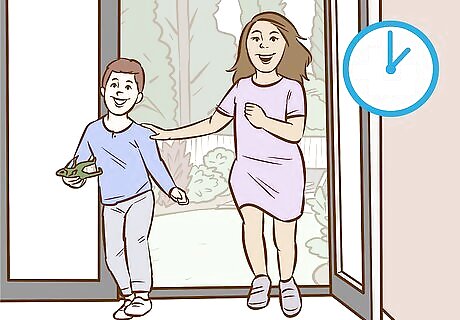
Set a start time. Don’t have children arrive much earlier than dinner time because spending too many hours together can cause kids to get on each other’s nerves. A start time around 5-6 p.m. allows your guests to get settled and then eat dinner without too much downtime.
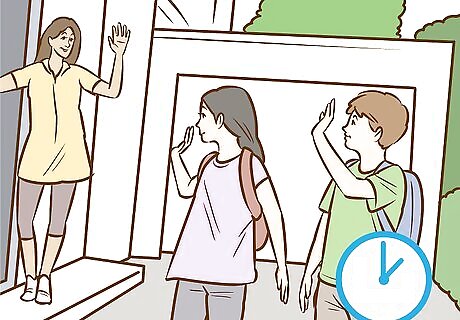
Set an end time. Make sure parents know what time to pick up their children the following morning to avoid having any kids lingering well into the day. You’ll likely be providing them with breakfast, so a pickup time between 10 and 11 a.m. gives you enough time to have them up, fed, and packed when their parents arrive.

Email or call parents to invite their children. You can make a physical invitation to hand out if it’s a birthday party or special celebration, but most sleepovers are more casual than this. Consider emailing parents so that they have a reference to look back at later regarding start and end times. But a simple phone call is usually good enough too. If handing out a paper invitation, avoid doing so in front of other children who aren’t invited to avoid hurt feelings.

List the who, when, and where. Make sure the invitation includes your name and your child’s name, the start and end times, and your address and phone number. It may be helpful to also include an alternate phone number, like your spouse’s cell phone, in case parents have trouble reaching you.
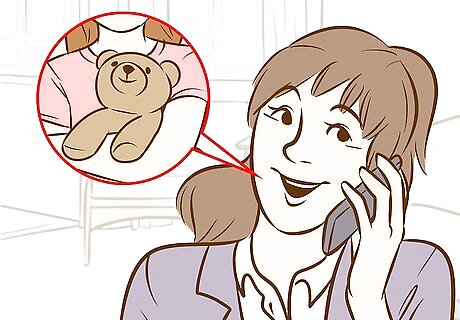
List the items guests need to bring. Make it clear if you’ll be supplying pillows, sleeping bags, and blankets for all the children, or if they need to bring their own. Encourage them to bring comfort items like security blankets and stuffed animals. Consider including a reminder about personal care items like toothbrushes and toothpaste, so that you don’t need to hand out extra toothbrushes to everyone. Ask the parents to provide emergency numbers as well as any medication the child may need. Also, find out if the children have any allergies.
Planning Activities
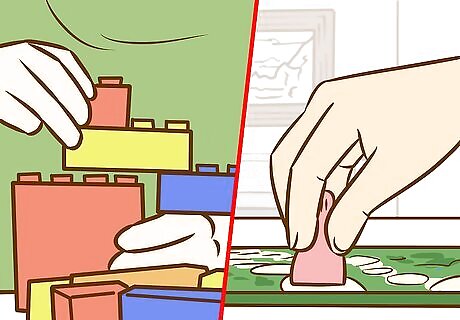
Have several games ready. Board games and card games are easy solutions for filling time. But you can also choose a more physical game, like hide-and-seek, charades, or musical chairs. If you have puppets, encourage the children to put on a puppet show, or make your own puppets out of old socks and craft supplies. Plan the games and gather the supplies in advance so you can focus on the children on the day of the sleepover.

Plan a scavenger hunt. Plant small items for the children to find around the house or yard. Small rubber dinosaurs, plastic action figures, or mini stuffed animals make for a fun surprise that they could take home with them. Just be sure you buy enough for every child to have one.

Plan a craft project. Encourage the children to get creative by setting up a finger painting station, or tracing cartoon characters with glue and then sprinkling macaroni on it. Try working on a papier mache project together, like making a piñata, and let the kids break it open in the morning.
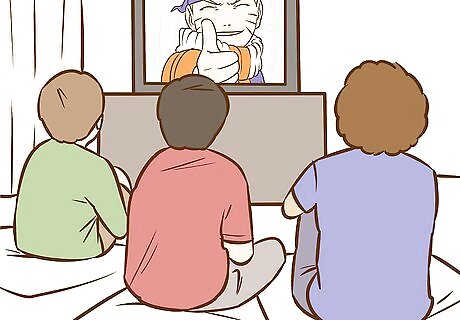
Select a movie to watch. This should be age appropriate and not scary. Show the movie toward the end of the night since it’s an opportunity to have everyone wind down and get into their sleeping bags. Choose a classic Disney movie like The Little Mermaid or The Lion King, or go with something more contemporary like Despicable Me, Finding Nemo, or Frozen.
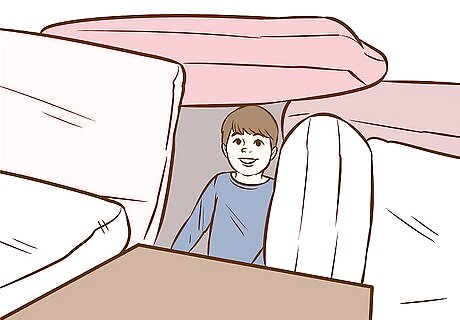
Set up the sleeping space. Let the kids have fun with prepping their sleeping arrangements. Push large furniture aside and let them build a fort of cushions and blankets in the middle of the room. Then they can place their sleeping bags inside if it’s safe to do so. Or have them make different designs with their sleeping bags on the floor, like a sunburst, triangle, or square.
Providing Food
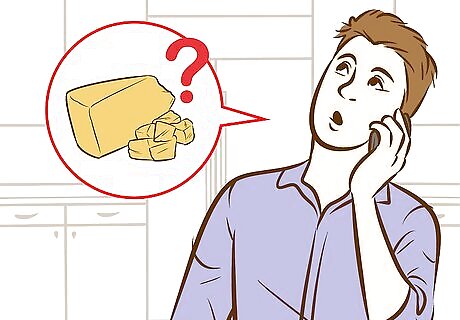
Ask parents about any food allergies. Write down a list of each child’s known allergies, such as peanuts, tree nuts, dairy, eggs, soy, etc. Reference this list when you go to the grocery store to shop for snacks, and read the ingredient lists on all packaging.
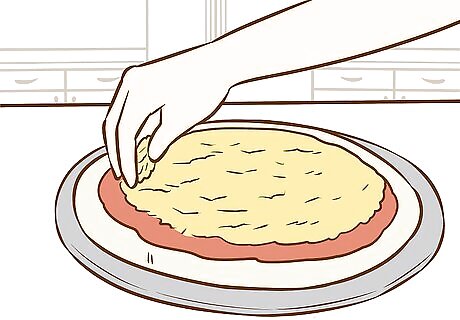
Make your own pizzas. Not only is this an easy, crowd-pleasing dinner, but it also doubles as an activity for your guests. If you don’t want to make your own dough, English muffins can stand in as the base for their pizzas. Then set up a “buffet” of toppings so that they can pick exactly what they’d like to have.
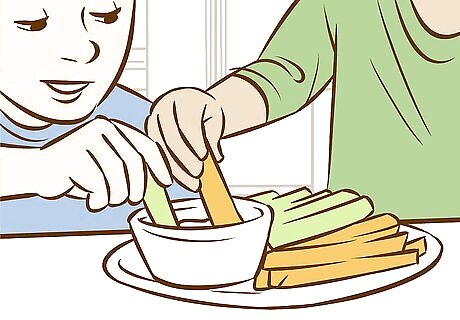
Supply healthy snacks. Chips and candy are popular sleepover snacks, but to avoid overloading your guests with salt and sugar, offer healthy options as well. Chop up vegetables and serve them alongside different dips. Swap potato chips out for pita chips. If you’re offering ice cream, slice some fresh fruit to offer as a topping.
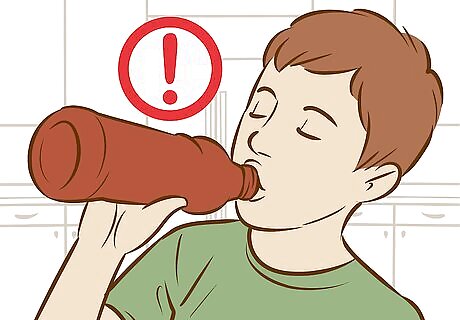
Avoid sugary or caffeinated beverages. Don’t give the children sodas or energy drinks, especially right before bed, since this could keep them up far later than you’d like. Offer beverages like water, milk, low-sugar juices, or lemonade.

Keep breakfast easy. Everyone, including you, will likely be tired the next morning, so plan a simple breakfast. Have a selection of cereals ready, as well as easy-to-peel fruits like clementines or bananas. Make pancakes in large batches and dress them up with fruits, chocolate chips, or whipped cream.
Planning for Setbacks
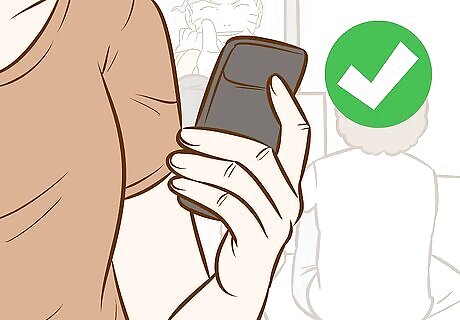
Keep a list of parent phone numbers handy. You never know when a young child might become homesick and want to leave the party. Make sure parents are prepared to receive your call asking them to come pick up their child. If someone does go home early, offer to have them back for breakfast so that they don’t feel like they missed out on everything.

Have extra sleeping gear ready. An extra sleeping bag and set of pajamas are important to have on hand in case any of the children wet the bed in the middle of the night. And even if you told the other parents what to bring, it’s likely someone will have forgotten a pillow or a toothbrush, so have those ready as well.

Enforce a “lights-out” time. Communicate to all the kids that the lights will be turned off at a certain time, and that they’re expected to settle down when this happens. Expect that some talking and laughing will continue beyond this time, though if it goes on too long, you may need to remind them that it’s time to sleep. Preschoolers aren’t accustomed to staying up very late, so select a time that allows them to stay up a little past bedtime, but not too much. For example, if your preschooler is normally in bed by 8 p.m., turn the lights off between 9 and 10 p.m. If the kids are still loud and hyper well after lights out, go back into the room where they’re sleeping and tell them it’s quiet time. Offer picture books and book lights to those who don’t feel tired enough to sleep, but be firm about the noise.

















Comments
0 comment